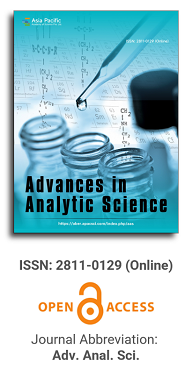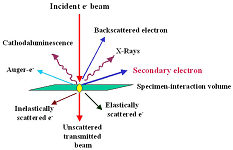
Asia Pacific Academy of Science Pte. Ltd. (APACSCI) specializes in international journal publishing. APACSCI adopts the open access publishing model and provides an important communication bridge for academic groups whose interest fields include engineering, technology, medicine, computer, mathematics, agriculture and forestry, and environment.

Impact of six digestion methods on the measurement of polystyrene microplastics in organisms using fluorescence intensity
Vol 3, Issue 1, 2022
Download PDF
Abstract
Microplastic pollution has emerged as a significant global environmental issue, raising considerable concern. To assess the biological impacts of microplastics, precise quantification within organisms is essential. Fluorescence intensity is a common method for measuring microplastics, but biological sample digestion—a crucial pre-treatment step—can potentially degrade the microplastics, affecting fluorescence readings and causing discrepancies between measured and actual values. This study investigates six widely used digestive agents: KOH, naoh, H2O2, HNO3, HNO3: hcl, and HNO3: HClO4. The effects of these digestion methods on microplastic fluorescence intensity and surface morphology were evaluated to determine the most effective protocol. The results indicate that KOH digestion (100 g·L-1, 60℃) has the least impact on fluorescence intensity and preserves the microplastics' surface morphology, whereas the other five methods caused varying degrees of fluorescence reduction and surface damage (such as aggregation, bubbles, scratches, and depressions). Furthermore, the KOH digestion method achieved a recovery rate of ≥96.3%±0.5% when used to extract microplastics from biological samples, demonstrating its suitability for analyzing fluorescent microplastics in such samples.
Keywords
References
- Thompson RC, Olsen Y, Mitchell RP, et al. Lost at Sea: Where Is All the Plastic? Science. 2004; 304(5672): 838- 838. doi: 10.1126/science.1094559
- Margolis D, Bushman F. Persistence by proliferation? Science. 2014; 345(6193): 143-144. doi: 10.1126/science.1257426
- Browne MA, Crump P, Niven SJ, et al. Accumulation of Microplastic on Shorelines Woldwide: Sources and Sinks. Environmental Science & Technology. 2011; 45(21): 9175-9179. doi: 10.1021/es201811s
- Hernandez E, Nowack B, Mitrano DM. Polyester Textiles as a Source of Microplastics from Households: A Mechanistic Study to Understand Microfiber Release During Washing. Environmental Science & Technology. 2017; 51(12): 7036-7046. doi: 10.1021/acs.est.7b01750
- Eriksen M, Liboiron M, Kiessling T, et al. Microplastic sampling with the AVANI trawl compared to two neuston trawls in the Bay of Bengal and South Pacific. Environmental Pollution. 2018; 232: 430-439. doi: 10.1016/j.envpol.2017.09.058
- Gündoğdu S, Çevik C. Micro- and mesoplastics in Northeast Levantine coast of Turkey: The preliminary results from surface samples. Marine Pollution Bulletin. 2017; 118(1-2): 341-347. doi: 10.1016/j.marpolbul.2017.03.002
- Naidu SA, Ranga Rao V, Ramu K. Microplastics in the benthic invertebrates from the coastal waters of Kochi, Southeastern Arabian Sea. Environmental Geochemistry and Health. 2018; 40(4): 1377-1383. doi: 10.1007/s10653-017-0062-z
- Nel HA, Dalu T, Wasserman RJ. Sinks and sources: Assessing microplastic abundance in river sediment and deposit feeders in an Austral temperate urban river system. Science of The Total Environment. 2018; 612: 950- 956. doi: 10.1016/j.scitotenv.2017.08.298
- Alomar C, Deudero S. Evidence of microplastic ingestion in the shark Galeus melastomus Rafinesque, 1810 in the continental shelf off the western Mediterranean Sea. Environmental Pollution. 2017; 223: 223-229. doi: 10.1016/j.envpol.2017.01.015
- Setälä O, Fleming-Lehtinen V, Lehtiniemi M. Ingestion and transfer of microplastics in the planktonic food web. Environmental Pollution. 2014; 185: 77-83. doi: 10.1016/j.envpol.2013.10.013
- Chae Y, Kim D, Kim SW, et al. Trophic transfer and individual impact of nano-sized polystyrene in a four-species freshwater food chain. Scientific Reports. 2018; 8(1). doi: 10.1038/s41598-017-18849-y
- Farrell P, Nelson K. Trophic level transfer of microplastic: Mytilus edulis (L.) to Carcinus maenas (L.). Environmental Pollution. 2013; 177: 1-3. doi: 10.1016/j.envpol.2013.01.046
- Cole M, Lindeque P, Fileman E, et al. Microplastic Ingestion by Zooplankton. Environmental Science & Technology. 2013; 47(12): 6646-6655. doi: 10.1021/es400663f
- Lu Y, Zhang Y, Deng Y, et al. Uptake and Accumulation of Polystyrene Microplastics in Zebrafish (Danio rerio) and Toxic Effects in Liver. Environmental Science & Technology. 2016; 50(7): 4054-4060. doi: 10.1021/acs.est.6b00183
- Jeong CB, Won EJ, Kang HM, et al. Microplastic Size-Dependent Toxicity, Oxidative Stress Induction, and p-JNK and p-p38 Activation in the Monogonont Rotifer (Brachionus koreanus). Environmental Science & Technology. 2016; 50(16): 8849-8857. doi: 10.1021/acs.est.6b01441
- Batel A, Linti F, Scherer M, et al. Transfer of benzo[a]pyrene from microplastics to Artemia nauplii and further to zebrafish via a trophic food web experiment: CYP1A induction and visual tracking of persistent organic pollutants. Environmental Toxicology and Chemistry. 2016; 35(7): 1656-1666. doi: 10.1002/etc.3361
- Karami A, Golieskardi A, Choo CK, et al. A high-performance protocol for extraction of microplastics in fish. Science of The Total Environment. 2017; 578: 485-494. doi: 10.1016/j.scitotenv.2016.10.213
- Cole M, Webb H, Lindeque PK, et al. Isolation of microplastics in biota-rich seawater samples and marine organisms. Scientific Reports. 2014; 4(1). doi: 10.1038/srep04528
- Li J, Yang D, Li L, et al. Microplastics in commercial bivalves from China. Environmental Pollution. 2015; 207: 190-195. doi: 10.1016/j.envpol.2015.09.018
- Avio CG, Gorbi S, Regoli F. Experimental development of a new protocol for extraction and characterization of microplastics in fish tissues: First observations in commercial species from Adriatic Sea. Marine Environmental Research. 2015; 111: 18-26. doi: 10.1016/j.marenvres.2015.06.014
- Phuong NN, Zalouk-Vergnoux A, Kamari A, et al. Quantification and characterization of microplastics in blue mussels (Mytilus edulis): protocol setup and preliminary data on the contamination of the French Atlantic coast. Environmental Science and Pollution Research. 2017; 25(7): 6135-6144. doi: 10.1007/s11356-017-8862-3
- Dehaut A, Cassone AL, Frère L, et al. Microplastics in seafood: Benchmark protocol for their extraction and characterization. Environmental Pollution. 2016; 215: 223-233. doi: 10.1016/j.envpol.2016.05.018
- Van Cauwenberghe L, Janssen CR. Microplastics in bivalves cultured for human consumption. Environmental Pollution. 2014; 193: 65-70. doi: 10.1016/j.envpol.2014.06.010
- Desforges JPW, Galbraith M, Ross PS. Ingestion of Microplastics by Zooplankton in the Northeast Pacific Ocean. Archives of Environmental Contamination and Toxicology. 2015; 69(3): 320-330. doi: 10.1007/s00244-015-0172- 5
- De Witte B, Devriese L, Bekaert K, et al. Quality assessment of the blue mussel (Mytilus edulis): Comparison between commercial and wild types. Marine Pollution Bulletin. 2014; 85(1): 146-155. doi: 10.1016/j.marpolbul.2014.06.006
- Lusher AL, Welden NA, Sobral P, et al. Sampling, isolating and identifying microplastics ingested by fish and invertebrates. Analytical Methods. 2017; 9(9): 1346-1360. doi: 10.1039/c6ay02415g
- Claessens M, Van Cauwenberghe L, Vandegehuchte MB, et al. New techniques for the detection of microplastics in sediments and field collected organisms. Marine Pollution Bulletin. 2013; 70(1-2): 227-233. doi: 10.1016/j.marpolbul.2013.03.009
- Rist S, Baun A, Hartmann NB. Ingestion of micro- and nanoplastics in Daphnia magna – Quantification of body burdens and assessment of feeding rates and reproduction. Environmental Pollution. 2017; 228: 398-407. doi: 10.1016/j.envpol.2017.05.048
- El-Emam AA, Hansen SH, Moustafa MA, et al. Determination of lisinopril in dosage forms and spiked human plasma through derivatization with 7-chloro-4-nitrobenzo-2-oxa-1,3-diazole (NBD-Cl) followed by spectrophotometry or HPLC with fluorimetric detection. Journal of Pharmaceutical and Biomedical Analysis. 2004; 34(1): 35-44. doi: 10.1016/j.japna.2003.08.021
- Dang WR, Kubouchi M, Yamamoto S, et al. An approach to chemical recycling of epoxy resin cured with amine using nitric acid. Polymer. 2002; 43(10): 2953-2958. doi: 10.1016/S0032-3861(02)00100-3
- Munno K, Helm PA, Jackson DA, et al. Impacts of temperature and selected chemical digestion methods on microplastic particles. Environmental Toxicology and Chemistry. 2017; 37(1): 91-98. doi: 10.1002/etc.3935
Supporting Agencies
Copyright (c) 2022 Yadan Zou, Qingqing Xu, Ge Zhang, Fuyun Li, Fengmin Li

This work is licensed under a Creative Commons Attribution 4.0 International License.

This site is licensed under a Creative Commons Attribution 4.0 International License (CC BY 4.0).
1.jpg)
Prof. Sivanesan Subramanian
Anna University, India





.jpg)
